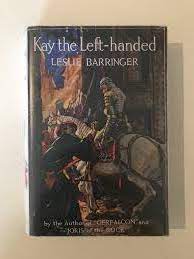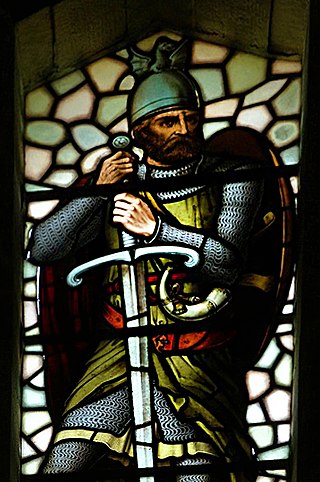
Sir William Wallace was a Scottish knight who became one of the main leaders during the First War of Scottish Independence.

Sharon Kay Penman was an American historical novelist, published in the UK as Sharon Penman. She was best known for the Welsh Princes trilogy and the Plantagenet series. In addition, she wrote four medieval mysteries, the first of which, The Queen's Man, was a finalist in 1996 for the Best First Mystery Edgar Award.

American literature is literature written or produced in the United States of America and in the colonies that preceded it. The American literary tradition thus is part of the broader tradition of English-language literature, but also includes literature of other traditions produced in the United States and in other immigrant languages. Furthermore, a rich tradition of oral storytelling exists amongst Native Americans.

Richard Horatio Edgar Wallace was a British writer of sensational detective, gangster, adventure and sci-fi novels, plays and stories.

Ben-Hur: A Tale of the Christ is a novel by Lew Wallace, published by Harper and Brothers on November 12, 1880, and considered "the most influential Christian book of the nineteenth century". It became a best-selling American novel, surpassing Harriet Beecher Stowe's Uncle Tom's Cabin (1852) in sales. The book also inspired other novels with biblical settings and was adapted for the stage and motion picture productions.
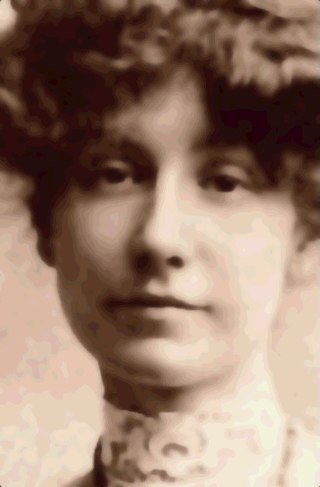
Margaret Gabrielle Vere Long, who used the pseudonyms Marjorie Bowen, George R. Preedy, Joseph Shearing, Robert Paye, John Winch, and Margaret Campbell or Mrs. Vere Campbell, was a British author who wrote historical romances, supernatural horror stories, popular history and biography.
George Bubb Dangerfield was a British-born American journalist, historian, and the literary editor of Vanity Fair from 1933 to 1935. He is known primarily for his book The Strange Death of Liberal England (1935), a classic account of how the Liberal Party in Great Britain ruined itself in dealing with the House of Lords, women's suffrage, the Irish question, and labour unions, 1906–1914. His book on the United States in the early 19th century, The Era of Good Feelings, won the 1953 Pulitzer Prize for History.

Leonard Alfred George Strong was a popular English novelist, critic, historian, and poet, and published under the name L. A. G. Strong. He served as a director of the publishers Methuen Ltd. from 1938 to 1958.
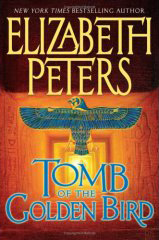
Tomb of the Golden Bird is the 18th in a series of historical mystery novels, written by Elizabeth Peters and first published in 2006. It features fictional sleuth and archaeologist Amelia Peabody. The story is set in the 1922 - 1923 archeological dig season in Egypt.

The Constant Princess is a historical fiction novel by Philippa Gregory, published in 2005. The novel depicts a highly fictionalized version of the life of Catherine of Aragon and her rise to power in England.

Richard I of England has been depicted many times in romantic fiction and popular culture.
The Ghosts of Watt O'Hugh is the first in a series of novels by Steven S. Drachman (2011). The books fall into the category of science fiction Western and tell the story of an American Civil War veteran who becomes a dime novel hero while engaging in various fantastic adventures. The books also feature true life characters such as Oscar Wilde, J.P. Morgan, the first-century Chinese emperor Wang Mang and the mathematician Leopold Kronecker, who appears as a villain.

John Biggins is a British writer of historical fiction. He is best known for his Prohaska series of novels set in the Austro-Hungarian Navy during the early years of the 20th Century.
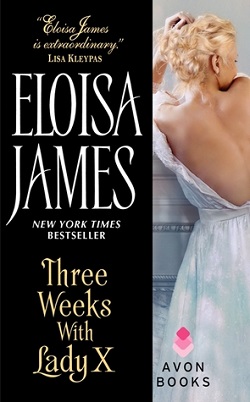
Three Weeks With Lady X is a historical romance written by Eloisa James and published in 2014. It was a New York Times Bestseller and was nominated for two Romantic Times awards.
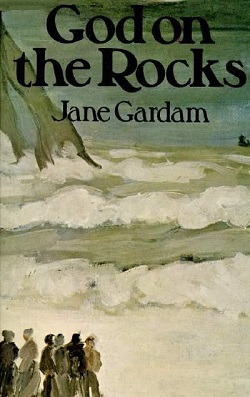
God on the Rocks is a novel written by Jane Gardam and published in 1978.

Alif the Unseen is a 2012 cyberpunk fantasy novel by American writer G. Willow Wilson. In the novel, a Middle Eastern hacker named Alif discovers a book of djinn tales which may lead to a new age of quantum computing. The novel won the 2013 World Fantasy Award for Best Novel.
Donald Barr Chidsey was an American writer, biographer, historian, novelist and writer of adventure fiction.

This Love Story Will Self-Destruct is a novel by American author Leslie Cohen, published by Simon & Schuster. It is Cohen's debut novel.

Kingfisher is a fantasy novel by Patricia A. McKillip. It was first published in hardcover and ebook by Ace Books in February 2016. The first British edition was published in ebook by Gateway/Orion in June 2017.
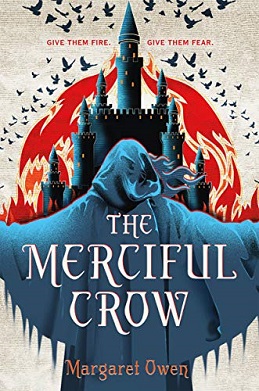
The Merciful Crow is a fantasy novel by Margaret Owen. It was released in 2019, and published by Henry Holt and Company. Its sequel is The Faithless Hawk.
